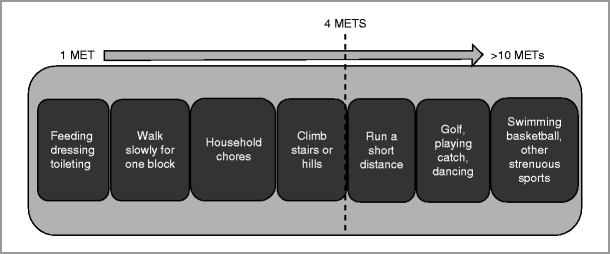and Shawn A. Gregory1
(1)
Harvard Medical School Cardiology Division, Department of Medicine, Massachusetts General Hospital, Boston, MA, USA
Abstract
The cardiologist is frequently called upon to assist in the management of patients with cardiovascular disease in the perioperative setting. Questions surrounding risk stratification, risk management, diagnostic testing, management of cardiovascular medications, and revascularization, among others, are germane to the optimal management of such patients. The cardiovascular consultant must be prepared to approach these questions in a systematic and evidence-based fashion.
Abbreviations
ACE
Angiotensin converting enzyme
CAD
Coronary artery disease
CVD
Cardiovascular disease
ECG
Electroc ardiography
ICD
Implantable cardioverter defibrillator
INR
International normalized ratio
LAD
Left anterior descending
LV
Left ventricular
LVEF
Left ventricular ejection fraction
MI
Myocardial infarction
PAD
Peripheral artery disease
PCI
Percutaneous coronary intervention
Introduction
The cardiologist is frequently called upon to assist in the management of patients with cardiovascular disease in the perioperative setting. Questions surrounding risk stratification, risk management, diagnostic testing, management of cardiovascular medications, and revascularization, among others, are germane to the optimal management of such patients. The cardiovascular consultant must be prepared to approach these questions in a systematic and evidence-based fashion.
General Approach [1, 2]
Define the question
Establish urgency
Gather primary data
Provide concise recommendations
Offer contingency plans
Offer narrow recommendations within consultant’s purview
Educate, when appropriate
Communicate directly
Follow up on recommendations
For the cardiovascular consultant:
Conduct history and physical examination
Consider ancillary testing
Stratify risk based on the above
Weigh strategies to reduce risk
Rationale for Perioperative Cardiovascular Consultation
History – Assess
Personal and family history of cardiovascular disease
Risk factors for cardiovascular disease
Hypertension
Hyperlipidemia
Smoking
Symptoms suggestive of cardiovascular disease: chest pain; dyspnea; palpitations; syncope; edema
Functional capacity (Fig. 30-1):
Co-morbid disease
Pulmonary disease
Diabetes mellitus
Renal disease
Hematologic disorders
Urgency and risk of procedure
If emergency noncardiac surgery is required (e.g., death or major complications are very likely or certain without surgery), proceed to surgery without further cardiovascular evaluation (Class IC)
If noncardiac surgery is not emergent, assess risk of surgery (Table 30-1):
Table 30-1
Risk of surgery
Risk category
Example
Vascular (reported cardiac risk often more than 5 %)
Aortic and other major vascular surgery
Peripheral vascular surgery
Intermediate (reported cardiac risk generally 1–5 %)
Intraperitoneal and intrathoracic surgery
Carotid endarterectomy
Head and neck surgery
Orthopedic surgery
Prostate surgery
Low (reported cardiac risk generally less than 1 %)
Endoscopic procedures
Superficial procedure
Cataract surgery
Breast surgery
Ambulatory surgery
Further testing and/or therapy and as described below
Physical Examination (Table 30-2)
Table 30-2
Physical examination in peri-operative assessment
Examination component | Findings that should prompt additional investigation |
|---|---|
Vital signs | Hypotension, hypertension, tachycardia, bradycardia |
Carotid pulse | Bruits, abnormal pulse contour |
Jugular venous pressure/pulse | Elevation or abnormal contour |
Pulmonary auscultation | Crackles, wheezing; dullness to percussion suggestive of pleural effusion |
Cardiac auscultation | Murmurs (particularly if loud, harsh, or associated with other findings suggestive of heart failure or other pathology), irregular rhythm |
Peripheral pulses | Diminished (particularly if associated with bruits and/or limb discoloration) |
Edema | If severe, unilateral, or associated with other findings of heart failure |
Preoperative Cardiovascular Testing
A.
Electrocardiography (ECG)
Provides prognostic information in patients with active cardiac conditions, e.g., ischemia, arrhythmia
Preoperative 12-lead ECG is recommended for:
Patients with known coronary artery disease (CAD), peripheral artery disease (PAD), or cardiovascular disease (CVD) undergoing intermediate-risk surgery (Class I)
Patients with at least one clinical risk factor undergoing vascular surgery (e.g., hypertension, hyperlipidemia, smoking; Class I) [6]
Preoperative 12-lead ECG is NOT recommended for asymptomatic patients undergoing low-risk procedures (Class III) [7]
B.
Noninvasive (Stress) Testing
Provides an objective measure of functional capacity; identifies myocardial ischemia; and estimates perioperative cardiac risk and long-term prognosis
Patients with active cardiac issues do not require testing; they should be treated for the active condition (Class I)
Noninvasive testing should NOT be performed in patients without clinical risk factors undergoing intermediate-risk surgery or in patients undergoing low-risk surgery (Class III)
Exercise stress test favored over other modalities, if possible; choice of adenosine/regadenason/dobutamine/dipyridamole and/or imaging depends on local expertise and patient characteristics (e.g., avoidance of dobutamine in patients with ventricular arrhythmia, avoidance of adenosine in patients with bronchospasm) [8]
C.
Echocardiography
Provides a measure of left ventricular (LV) function; identifies and characterizes valvular disease
May be indicated if:
Physical examination or other data are suggestive of worsening or previously undiagnosed heart failure and/or valvular disease
Routine perioperative evaluation of LV function is of limited utility and is NOT recommended (Class III) [9]
Perioperative Medications
A.
Beta-blockers
Initially thought to decrease perioperative ischemia in high-risk patients
Subsequent studies less promising
Salutary effects in patients with arrhythmia (e.g., rate control) and cardiomyopathy (e.g., neurohormonal blockade)
Beta -blockers are indicated in patients who:
Are already receiving beta-blockers (Class I)
Are high risk and undergoing vascular surgery (Class I)
Beta -blockers are NOT indicated in patients with:
Absolute contraindication(s) to beta blockade (Class III)
B.
Get Clinical Tree app for offline access
Antiplatelet Agents
Aspirin
Indicated in patients with known CVD, unless absolutely contraindicated
Should not be routinely discontinued prior to surgery
Thienopyridines (Clopidogrel, Prasugrel, Ticagrelor; ADP receptor/P2Y12 blockade)
Should not be discontinued for: 4 weeks after percutaneous balloon angioplasty; 4–6 weeks after bare metal stent deployment; 12 months after drug eluting stent deployment< div class='tao-gold-member'>Only gold members can continue reading. Log In or Register to continue

Stay updated, free articles. Join our Telegram channel

Full access? Get Clinical Tree



